What you need to know about handcycling
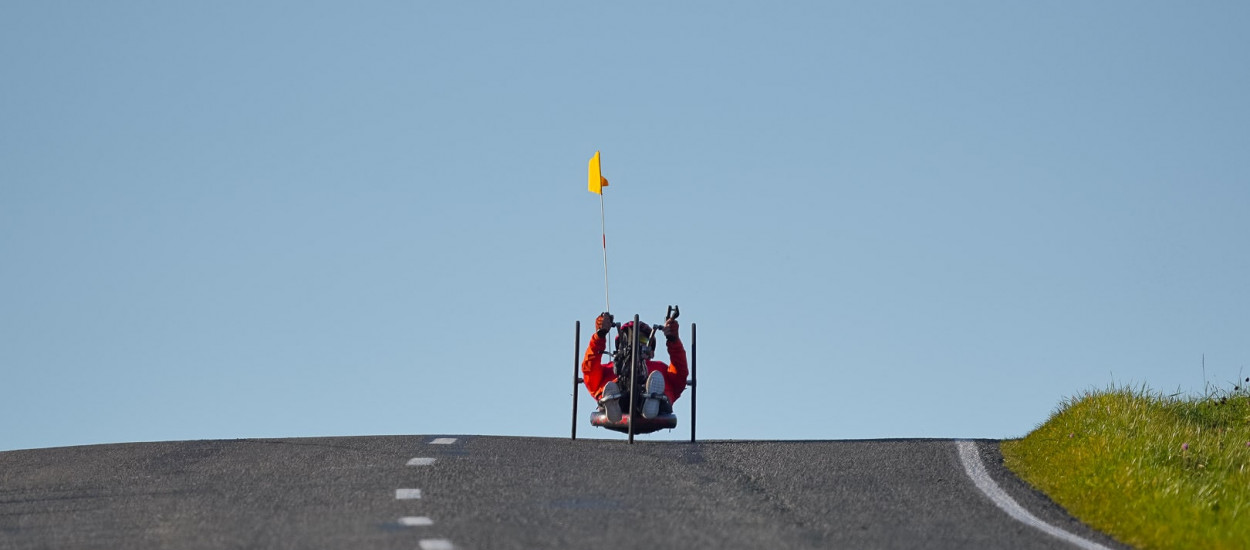
What is handcycling?
Handcycling is basically cycling with your arms and upper body. It is great exercise and an inclusive mode of transportation for disabled people who aren’t able to ride a traditional bike.
On a handcycle, you are in a reclining position on a three-wheeled tricycle bike with many of the same gears and parts as a bicycle. The biggest difference is that you pedal a handcycle with your hands instead of your feet.
What you need to know about handcycling is that you can just get outside and exercise, ride socially with your family and friends, or be as competitive as you want to be.
Because the gears boost your own physical effort, handcycles are more efficient than wheelchair, while they are also legally allowed anywhere a pedal cycle goes, such as roads and cycle paths.
Handcycles come in different styles so people can find a model that fits their needs, and requirements. The most common type is the delta trike which has one wheel at the front and two at the rear. Others include cross-training handcycles, off-road handcycles, upright handcycles and recumbent handcycles.
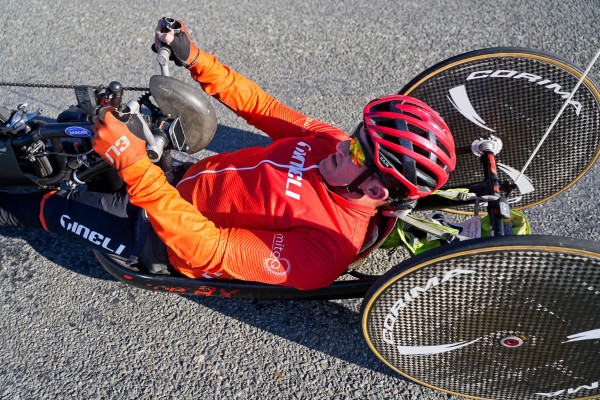
Tineli Ambassador Jono Nelson
Handcycling Benefits
Handcycling has multiple benefits. It boosts independence by giving you the freedom to visit places and get outside and is great exercise to help keep people who use wheelchairs in good physical shape. It provides a way to cover much greater distances than in a wheelchair.
As well as burning calories, the exercise releases endorphins into your body that help keep away depression, while it gets you outside to get your daily vitamin D, which helps regulate moods. Socially, handcycling can be a friendly group activity.
Handcycling can also be competitive, with races taking place regularly all around New Zealand and the world. In handcycling racing, to give a fair chance in competition, you are classified on your disability level, with H1 the most disabled, and H the least level of disability.
The sport of handcycling has grown exponentially in recent years. Time Trials are between 15 – 25km, and a road race can be up to 80km, on any sort of terrain.
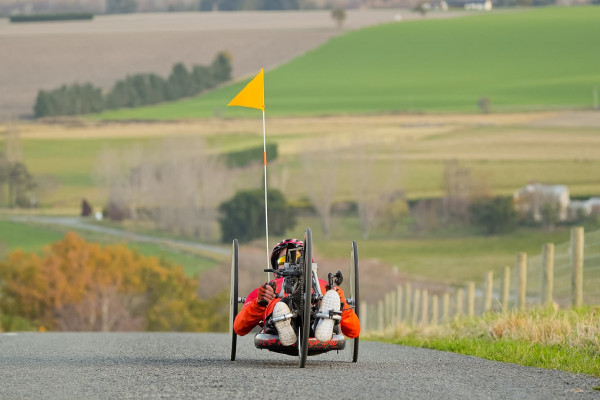
Tineli Ambassador Jono Nelson
My personal handcycling journey
This is my own story about taking up handcycling and aiming for the very top. I was eight weeks premature when I was born in 1983, just 1.2kgs, and only given 24 hours to live. I was also born with spina bifida, a birth defect when the spine and spinal cord don't form properly, as well as a bi- lateral cleft and palate, a birth defect in which the lips don't form properly beside a gap in the roof of the mouth.
I’m 38 this year. Growing up in a wheelchair wasn't easy and over the years I have had 36 major operations to give me quality of life. My parents were constantly told that I wouldn't be able to do various things like walk, talk or eat well. I can do all those things, walking short distances with crutches, but mainly using a wheelchair to get around.
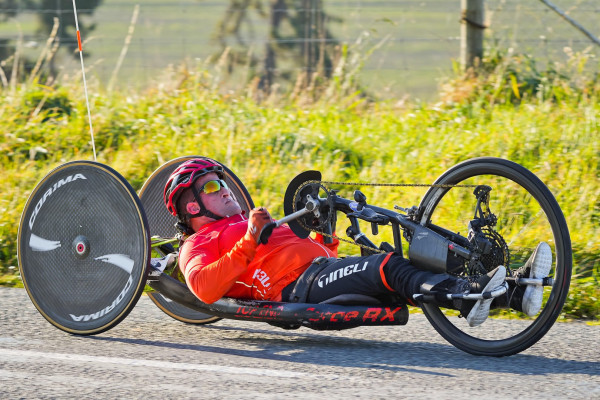
Tineli Ambassador Jono Nelson
Getting started and aiming high
I don’t let my challenging start stop me from achieving what I want. I started handcycling in 2009 after serious health issues made me retire from wheelchair racing. Having done no exercise for eight weeks after major surgery, I’d put on 10kgs and knew I couldn’t go on like this.
In handcycle racing I am in the H4 Classification, which means paralysed from the waist down. To have a go at a Paracycling event, I chose Parafed Canterbury, which was the start of an incredible journey for me. Coached by Colin Ryan, I went to my first club handcycling racing nationals, placing third in both the time trial and road race.
Just four years later in 2013, I was selected to represent New Zealand at the Paracycling World Championships in Canada. I have since competed in and represented New Zealand in both the Time Trial and Road Race in many UCI world cup races and C1 events worldwide, gaining a top international ranking of 28th in my classification.
I’ve won four New Zealand titles in both the time trial and road race and am going for my fifth title in Hokitika this year. Growing up my dream was always to compete in the Paralympics.
I have made the selection long-list for Paralympics handcycling for both Rio and Tokyo, with my main aim now to make it to Paris in 2024. I'll be 40 years old, but para-athletes seem to hit their prime at this age, so I’m training hard to reach my goal.
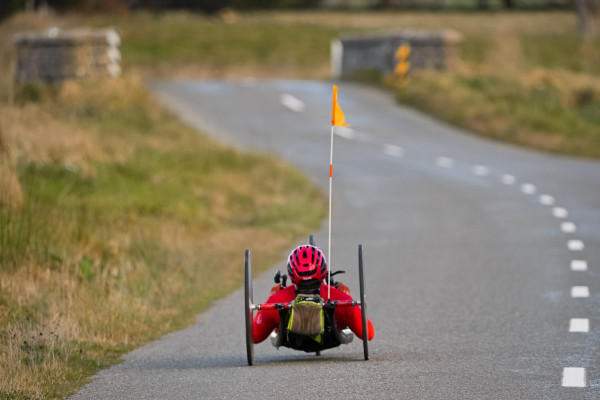
Tineli Ambassador Jono Nelson
About the author
Jonathan ‘Jono Nelson’ grew up and went to primary and high School in Timaru. In primary school, he used to get bullied a lot because of his disability, but when he got to high school, Jono discovered his love of sport and became an equal with his peers. Leaving high school, he studied for a Certificate in Sport and Fitness at Aoraki Polytechnic to achieve a dream of becoming a personal trainer, but learned that this line of work wasn't going to work for him because of health and safety rules.
So, Jono changed course to work in the disability sector as a support worker. He really loves working with other disabled people in the community, teaching life skills and social skills. Having a disability himself provides him with a level of understanding that his able-bodied colleagues don't have. In 2009 he married to his incredible wife, Sharon, saying “without her I certainly wouldn't be able to do what I do in my life”.
As an ambassador for Tineli cycling clothing, Jono wears our ambassador kit including our custom cycling apparel Pro Aero Jersey, our Pro Elite Bib Shorts, and our Pro 2 In 1 Road Suit from our custom bicycle clothing line.
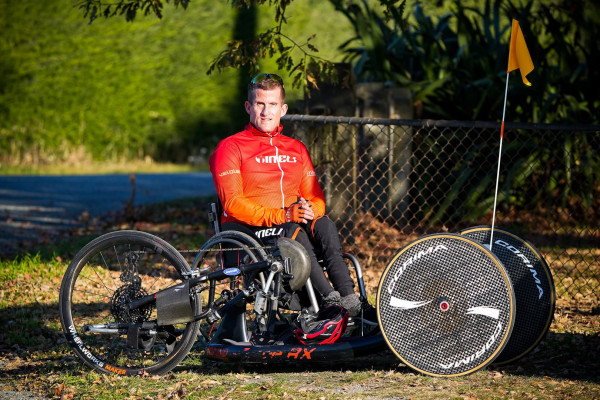
Tineli Ambassador Jono Nelson